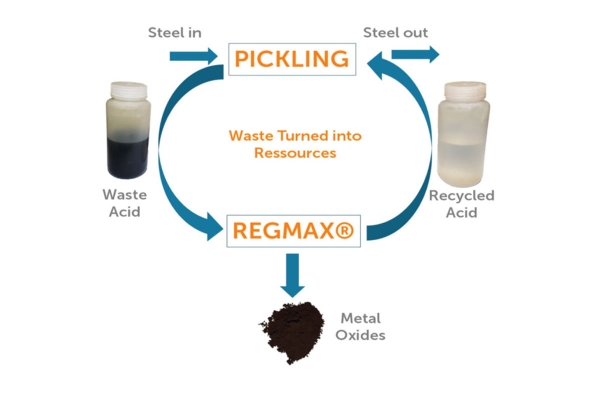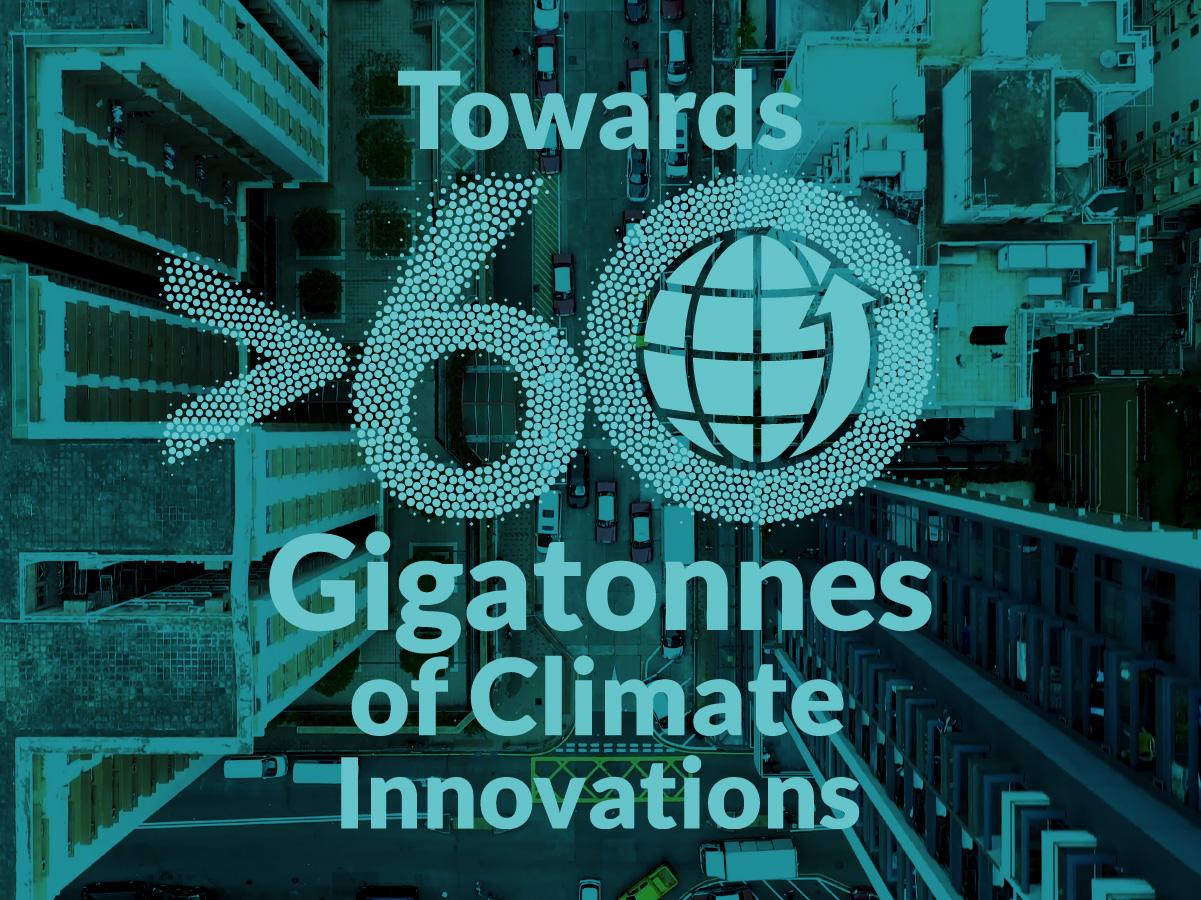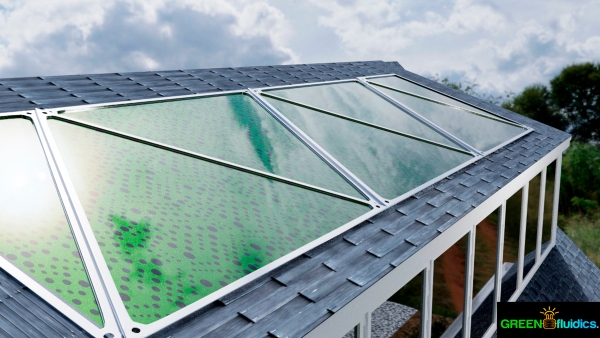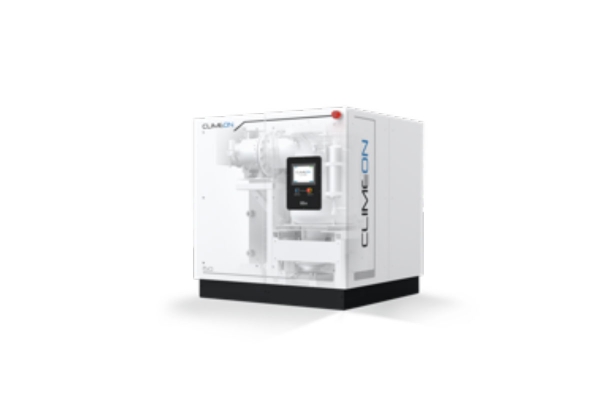Nominated innovations
1000 innovative clean energy solutions and > 150 framework enablers with the potential to deliver more than twelve gigatonnes of avoided emissions by 2030
These assessments are based on a basic avoided emission assessment. The overall concept of avoided emissions is that a solution (product or service) enables the same function to be performed with significantly less GHG emissions. The method of measuring avoided emissions, is to compare a baseline scenario without the enabling solution, with a scenario using the enabling solution; whereby the baseline represents the ‘business as usual’ (BAU) scenario.
These assessments are based on the framework document: The Avoided Emissions Framework (AEF) from September 2020

Eliminating waste acid from stainless steel industry
SUSTEC is focusing on green technologies to reduce the environmental impact of existing technologies. SUSTEC has developed a process they call 'REGMAX' to overcome existing problems with mixed acid pickling and its regeneration. According to SUSTEC, the REGMAX process enables total recovery of all waste acids components: The process is applicable for all metal and acid concentrations and gives freedom of choosing the optimum pickling conditions for best pickling performance. The closed material loop minimizes the operational costs and environmental impact of pickling.
Austria
≈10

Sustec
Eliminating waste acid from stainless steel industry
SUSTEC is focusing on green technologies to reduce the environmental impact of existing technologies. SUSTEC has developed a process they call 'REGMAX' to overcome existing problems with mixed acid pickling and its regeneration. According to SUSTEC, the REGMAX process enables total recovery of all waste acids components: The process is applicable for all metal and acid concentrations and gives freedom of choosing the optimum pickling conditions for best pickling performance. The closed material loop minimizes the operational costs and environmental impact of pickling.
≈10Mt CO2e/year

ELFD-smokeless biomass stove
Replace traditional cooking stoves with a version that requires no external energy source(except biomass as fuel) to function. Additionally the innovation provides the fuel combustion process with more air than traditional techniques, resulting in more efficient use of fuel and less harmful biproducts.
India

Electroabrik
ELFD-smokeless biomass stove
Replace traditional cooking stoves with a version that requires no external energy source(except biomass as fuel) to function. Additionally the innovation provides the fuel combustion process with more air than traditional techniques, resulting in more efficient use of fuel and less harmful biproducts.
Currently unavailable

Elevator modernization
Elevator-KERS wrote: Components of elevator system, depending on the situation, have excess gravitational potential energy that goes to waste. Our solution stores and utilizes this energy by hydraulic kinetic energy recovery system- kers. This way, overall elevator electricity consumption is decreased by 10%. Not much per elevator, but there’re 80000 new elevator units each year so savings sum up significantly.. Source: EIT Climate KIC's ClimateLaunchPad
Serbia

Elevator-KERS
Elevator modernization
Elevator-KERS wrote: Components of elevator system, depending on the situation, have excess gravitational potential energy that goes to waste. Our solution stores and utilizes this energy by hydraulic kinetic energy recovery system- kers. This way, overall elevator electricity consumption is decreased by 10%. Not much per elevator, but there’re 80000 new elevator units each year so savings sum up significantly.. Source: EIT Climate KIC's ClimateLaunchPad
Currently unavailable

Elektronio
Elektronio wrote: Elektronio is a clean tech mobility solutions startup which makes premium electric bicycles with revolutionary design. Our first model is “play”, a novel. Electric tilting tricycle which consists a smart commuting tool in urban environments. We make these bicycles custom and handcrafted, according to customers’ desires and needs. Our vision is to enrich our collection with more smart solutions of sustainable mobility into the future and establish elektronio as a worldwide bicycle brand, the reference for electric cycling. Do you #reimagineyourvehicle ?.. Source: EIT Climate KIC's ClimateLaunchPad
Greece

Elektronio
Elektronio
Elektronio wrote: Elektronio is a clean tech mobility solutions startup which makes premium electric bicycles with revolutionary design. Our first model is “play”, a novel. Electric tilting tricycle which consists a smart commuting tool in urban environments. We make these bicycles custom and handcrafted, according to customers’ desires and needs. Our vision is to enrich our collection with more smart solutions of sustainable mobility into the future and establish elektronio as a worldwide bicycle brand, the reference for electric cycling. Do you #reimagineyourvehicle ?.. Source: EIT Climate KIC's ClimateLaunchPad
Currently unavailable

Electrochemical recuperator (ECR) batteries
Electrochemical Recuperator (ECR) represents a new class of batteries, introducing an alternative to existing energy storage technology. ECRs use water-based non-toxic electrolytes, which reduce fire risks and environmental hazards compared to conventional batteries. ECR cells’ manufacturing process has approximately five times lower carbon footprint than conventional Li-Ion batteries, according to the innovator. ECRs are constructed to endure more than 1 million charging cycles without major loss of performance characteristics. ECRs do not use scarce or ethically tainted materials.
Finland

Geyser Batteries
Electrochemical recuperator (ECR) batteries
Electrochemical Recuperator (ECR) represents a new class of batteries, introducing an alternative to existing energy storage technology. ECRs use water-based non-toxic electrolytes, which reduce fire risks and environmental hazards compared to conventional batteries. ECR cells’ manufacturing process has approximately five times lower carbon footprint than conventional Li-Ion batteries, according to the innovator. ECRs are constructed to endure more than 1 million charging cycles without major loss of performance characteristics. ECRs do not use scarce or ethically tainted materials.
Currently unavailable

Electricity-generating CO₂-absorbing bio-panel
GREENFLUIDICS produces a solar bio-panel that integrates the capture of CO₂, production of oxygen, metabolized heat and capture of solar radiation efficiently via nano-fluids. Contrary to the usual solid state solar cells the bio-panel is a full spectrum solar collector including infrared radiation, including an automated monitoring of energy efficiency and metabolic variables with sensors integrated with IoT and data analytics, allowing a conversion of light and heat into energy at the same time.
Mexico
≈100

Greenfluidics
Electricity-generating CO₂-absorbing bio-panel
GREENFLUIDICS produces a solar bio-panel that integrates the capture of CO₂, production of oxygen, metabolized heat and capture of solar radiation efficiently via nano-fluids. Contrary to the usual solid state solar cells the bio-panel is a full spectrum solar collector including infrared radiation, including an automated monitoring of energy efficiency and metabolic variables with sensors integrated with IoT and data analytics, allowing a conversion of light and heat into energy at the same time.
≈100Mt CO2e/year

Electricity reduction service
My Impact wrote: Electricity prices in australia and around the world are skyrocketing and after thorough market research, we know that restaurants are some of the highest electricity consuming businesses in australia. Many owners and managers have told us that they do not understand their electricity bills, and renewable energy isn't an option as they are often tenants and not building owners. . So how do we fix this and empower restaurants to lower their electricity consumption? ... Source: EIT Climate KIC's ClimateLaunchPad
Australia

My Impact
Electricity reduction service
My Impact wrote: Electricity prices in australia and around the world are skyrocketing and after thorough market research, we know that restaurants are some of the highest electricity consuming businesses in australia. Many owners and managers have told us that they do not understand their electricity bills, and renewable energy isn't an option as they are often tenants and not building owners. . So how do we fix this and empower restaurants to lower their electricity consumption? ... Source: EIT Climate KIC's ClimateLaunchPad
Currently unavailable

Electricity from waste heat
A substantial part of the energy used in the world is wasted as heat. Climeon AB has developed a solution to convert waste heat with temperatures between 70 and 120 °C into electricity through a vacuum process. One of the company’s key sectors is the marine sector where the Climeon Ocean™ solution converts waste heat from ship engines, creating up to several GWh of “free” electricity each year. The company claims that for some ships, that translates into a savings of more than 1,000 metric tons of fuel or 3,000 metric tons of CO₂ per year. An even larger sector is steel where Swedish steel producer SSAB running Climeon Ocean™ at their production site in Borlänge.
Sweden
≈10

Climeon AB
Electricity from waste heat
A substantial part of the energy used in the world is wasted as heat. Climeon AB has developed a solution to convert waste heat with temperatures between 70 and 120 °C into electricity through a vacuum process. One of the company’s key sectors is the marine sector where the Climeon Ocean™ solution converts waste heat from ship engines, creating up to several GWh of “free” electricity each year. The company claims that for some ships, that translates into a savings of more than 1,000 metric tons of fuel or 3,000 metric tons of CO₂ per year. An even larger sector is steel where Swedish steel producer SSAB running Climeon Ocean™ at their production site in Borlänge.
≈10Mt CO2e/year

Electricity Anytime, Everywhere.
PORT-E wrote: Port-e redefines the concept of portable electricity. It harnesses and stores the heat generated while cooking at restaurants, cafeterias and household to power up the building at a later time of the day. Being rechargeable and reusable the port-e units can reduce the footprints of the ghg by avoiding the fossil fuel-based generation of electricity. Restaurants use several units of electricity per hour accounting to a significant share in the overall power generated by the burning of fossil fuels. Heat rechargeable port-e units absorb heat by placing them around the cooking vessels or even in the kitchen. These can then be fitted into the sockets, allowing the heat stored to be converted into the electricity... Source: EIT Climate KIC's ClimateLaunchPad
India

PORT-E
Electricity Anytime, Everywhere.
PORT-E wrote: Port-e redefines the concept of portable electricity. It harnesses and stores the heat generated while cooking at restaurants, cafeterias and household to power up the building at a later time of the day. Being rechargeable and reusable the port-e units can reduce the footprints of the ghg by avoiding the fossil fuel-based generation of electricity. Restaurants use several units of electricity per hour accounting to a significant share in the overall power generated by the burning of fossil fuels. Heat rechargeable port-e units absorb heat by placing them around the cooking vessels or even in the kitchen. These can then be fitted into the sockets, allowing the heat stored to be converted into the electricity... Source: EIT Climate KIC's ClimateLaunchPad
Currently unavailable

Electric vehicle charging infrastructure
The Parking Energy innovation is a cable system that can be installed at existing parking infrastructure to enable EV charging capabilities. Large residential and office parking stations can be retrofitted to meet the needs of the growing EV fleet. The business is built around the charging as-a-service model, which is further made possible by allowing various types of charging stations to be installed rather than a singular coupling. The innovation can reduce emissions in urban areas by enabling the procurement of electromobility options.
Finland

Parkkisähkö Oy
Electric vehicle charging infrastructure
The Parking Energy innovation is a cable system that can be installed at existing parking infrastructure to enable EV charging capabilities. Large residential and office parking stations can be retrofitted to meet the needs of the growing EV fleet. The business is built around the charging as-a-service model, which is further made possible by allowing various types of charging stations to be installed rather than a singular coupling. The innovation can reduce emissions in urban areas by enabling the procurement of electromobility options.
Currently unavailable